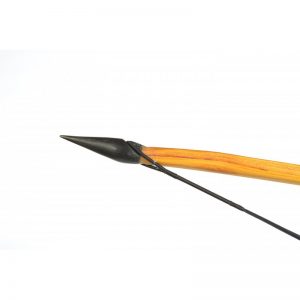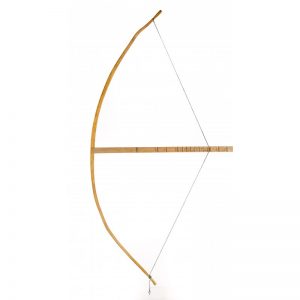The Best Wood for Bows
The Best Wood for Bows
What is the material that has the strongest affiliation with the bow? The answer is of course wood! Humans have been taking wood from trees and constructing bows for millennia. There are many types of wood out there, but what is the best wood for bows? Not all wood is created equal. Some are entirely unsuitable for constructing bows. In this article, we’ll examine a variety of wood and attempt to narrow down a few select types that are considered the best wood for bows.
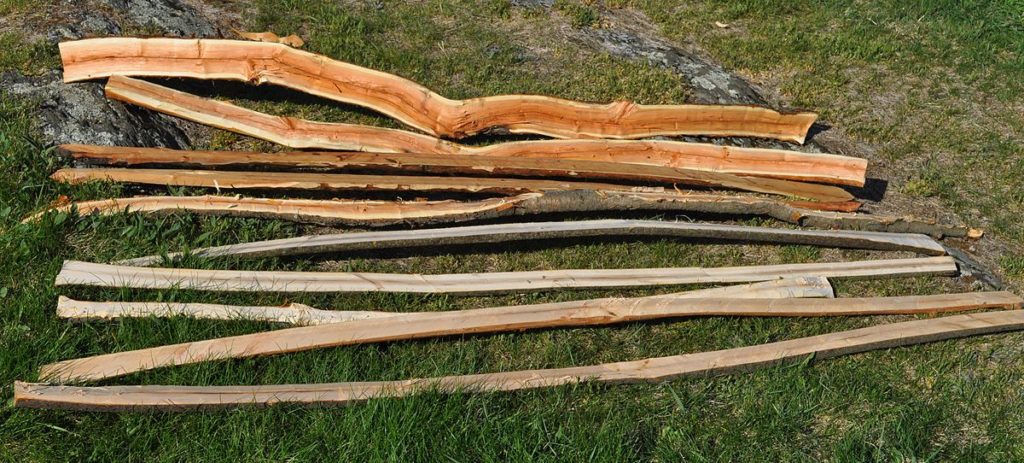
The Best Wood for Bows – Technical Considerations
Before we go on naming and listing various types of wood, let us consider what aspects, characteristics, and qualities of wood make it especially suitable for making a bow. When it comes to making a bow, here are a few fundamental properties a bowyer would desire from a wood, or from any material that would go into making a bow
- Elasticity – in physics and material science, elasticity refers to the ability of a material to resist a distorting influence and return to its original, unstressed state. The elasticity of a wood allows the material to store energy, and from a purely technical perspective, that is what a bow is: an energy storage device.
- Strength – the best woods for bows are strong in that they can undergo a relatively significant amount of stress and not break. If a wood is too weak, it could rupture as its fibers tear. This would of course be highly undesirable.
- Stability – some wood is highly resilient. Therefore the two above-mentioned characteristics do not change or alter significantly with changes in the environment. A drastic change in temperature and/or humidity can drastically alter the behavior of certain woods.

The Best Wood for Bows – Units & Calculations
In basic, non-technical terms, suitable bow woods should be able to bend without breaking and return rapidly and easily to their original position or shape. This should be the case in the widest range of environmental conditions.
A ratio of two values can be used to determine a wood’s suitability for making a reliable bow.
The first of these values is what is known as the modulus of elasticity (MOE). MOE determines how easily a bow will bend. The higher this particular number, the stiffer the wood. This measurement is derived from the ratio of how much a bow will bend or deform along its length for a given amount of stress. MOE is expressed in pounds-force per square inch (lbf/in2) or gigapascals (GPa)
Comparing the MOE value of different woods gives us an idea of their elasticity.
The second value to consider is known as the Modulus of Rupture or MOR. It measures the physical breaking point of a length of wood. MOR units are pounds-force per square inch (lbf/in2) or megapascals (MPa).
In terms of data, we would like to see an ideal bow wood with a low MOE value and a high MOR. The ratio of MOE to MOR may be referred to as the wood’s Bow Index.
(MOR/MOE) * 1000.
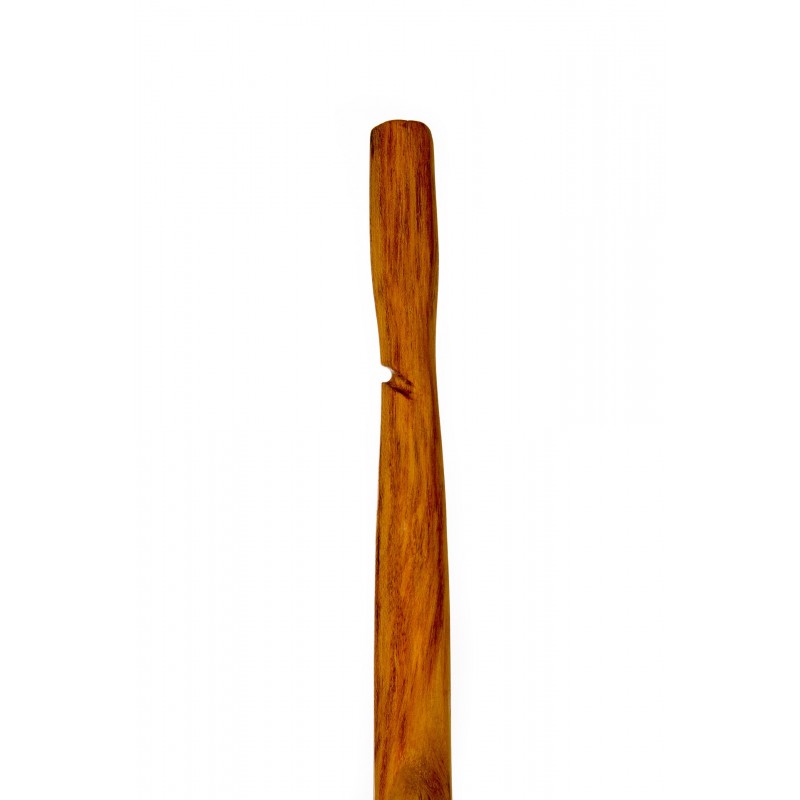
Bow Index Examples
Extensive calculations done by The Wood Database (https://www.wood-database.com/) reveal the best and worst woods for bow construction based on the wood’s Bow Index.
Some of the best woods include:
Yew (Pacific) average Bow Index (BI) value: 11.26
Osage Orange (American) BI: 11.5
Some of the worst bow woods include:
Balsa: 5.73
Pacific Silver Fir: 5.7
The Best Wood for Bows – Species Breakdown
Maple
Of the genus Acer, Maple is a common type of wood that has been used for a very long time in many different places. With over 130 species, this type of tree grows all over the northern hemisphere. Most species grow in Asia, but the tree is abundant in Europe and North America.

The wood has a Bow Index value of 10.4 and is considered a good bow wood. Historically, Maple was used in the making of Asiatic recurve bows. The Ottoman Turkish bowyers found the Maple to be most desirable in the construction of their bows.
Several modern recurve bows still use Maple as a key component in their bow manufacturer.
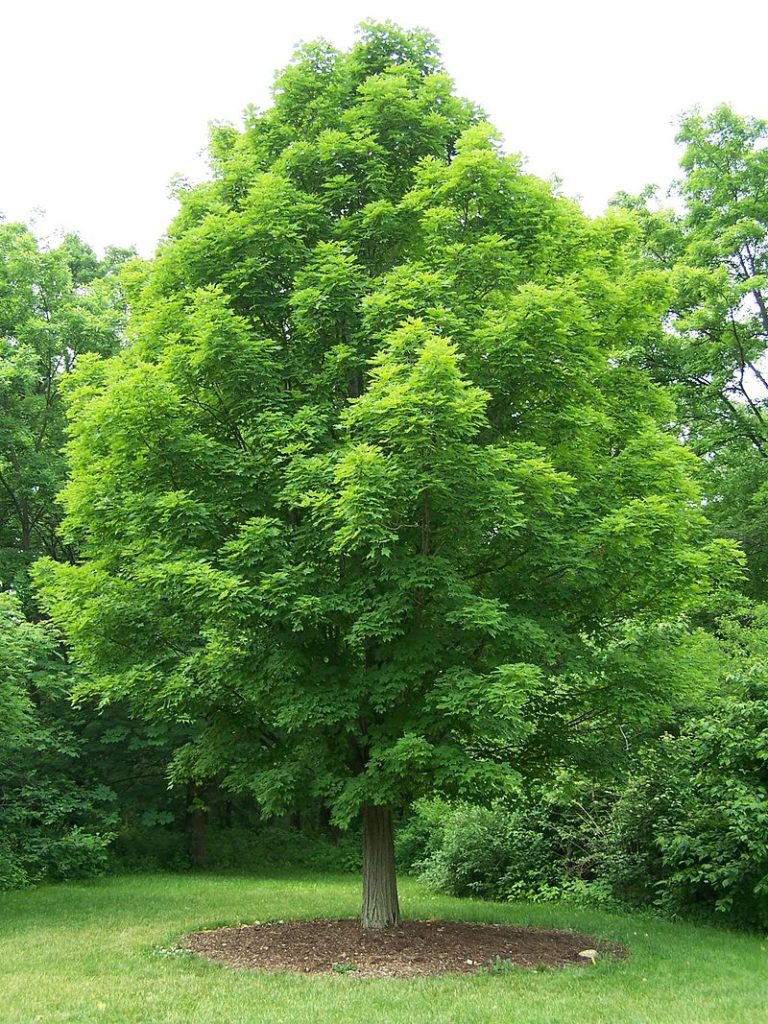
Hickory
Comprising the genus Carya, Hickory is a common wood that is strong and durable. Hickory has a high MOR value but not a very good MOE. Its allure lies mostly in its abundance and strength and less so in its efficiency.
Used extensively by The Eastern Woodlands tribes of North America, hickory proves itself worthy of being crafted into a rugged flatbow or longbow.
The bows made by Grayvn Bows featured in our shop are all made from American Hickory and they are all quite lovely.
This is a common bow wood for first-time dabblers into the world of bow making. If you are thinking about making your first bow, consider a nice stave of hickory.
Check out the Hickory bows featured at the Archery Historian shop below:
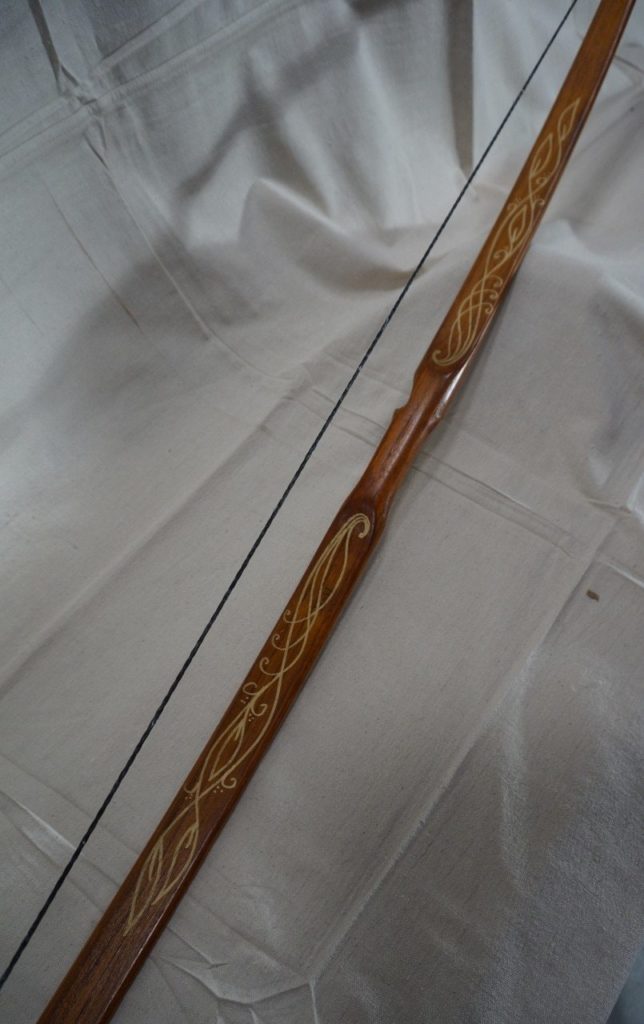

Hazel
Hazel, a nice name for a person, a cool eye color, and a good choice for making a bow! Of the genus Corylus, hazel is found all over the temperate Northern Hemisphere and produces an edible nut (hazelnut).
The hazel has become quite a popular bow wood. Both flatbows and longbow styles have been produced with the use of hazelwood.
Yew
Want to make a bow out of one of the most famous types of woods out there? Yew can do it! We’re working on our jokes, bear with us. The European Yew has been used as a bow wood for thousands of years.
The most notable historical use of Yew for bow wood is that of the Welsh or English Longbow. Yew is considered one of the hardest of softwoods, yet it possesses a high degree of elasticity (high MOE value).
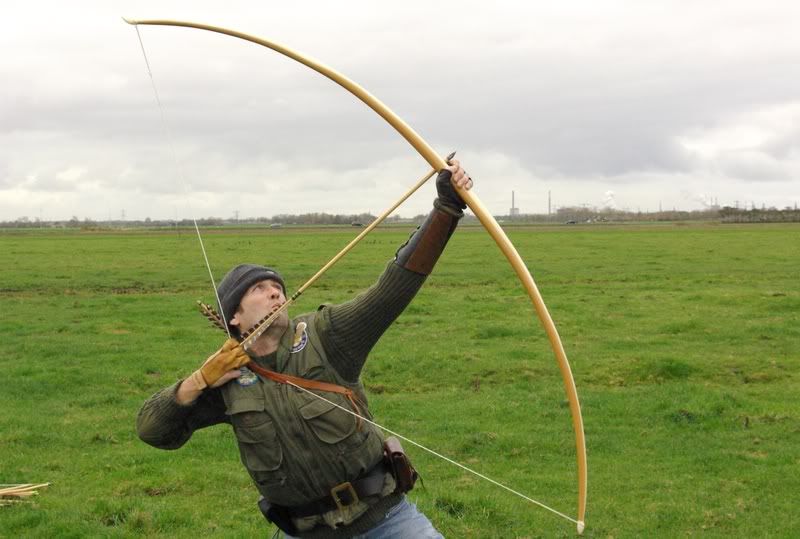
Traditionally the bow staves selected for bows utilized the natural growth formation of Yew. The harder inner wood of the Yew, known as the heartwood, and the outer sapwood come into play with a traditional English longbow. The inner heartwood resists compression and is used for the belly side of the bow. The outer sapwood resists tension and the bow is formed so that the sapwood runs along the back of the bow. This natural difference in characteristics between the inner heartwood and outer sapwood is similar to the concept utilized in creating composite recurves. A composite recurve uses entirely different material to create this effect, namely horn on the belly and sinew on the back of the bow.

European and Pacific Yew
The utilization of Yew for bows was intense enough in England during the middle ages that the English had to begin importing the wood from mainland Europe. Indeed the tree had been nearly exterminated. Vast trade networks and government interest in the wood allowed for the manufacture of Yew bows well after local trees had been decimated.
This European Yew (Taxus baccata), due to its scarcity is not as popular for bow making as it once was. The Pacific Yew (Taxus brevifolia) on the other hand is more readily available. Both European and Pacific Yew have a Bow Index of over 11 making them a good bow wood from a technical perspective.
As a cautionary note, all parts of Yew are toxic and a mask should be worn to discourage the inhalation of fine wood dust.
Osage Orange
Osage Orange (Maclura pomifera), the poor man’s Yew. Possessing similar physical characteristics to Yew, Osage Orange became quite popular as a bow wood. When it comes to self-bows, that is bows made from a single stave of wood, Osage Orange is rated among the best wood for bows. The wood has a Bow Index of 11.5 making it very similar to Yew. Osage Orange is also highly resistant to rot.
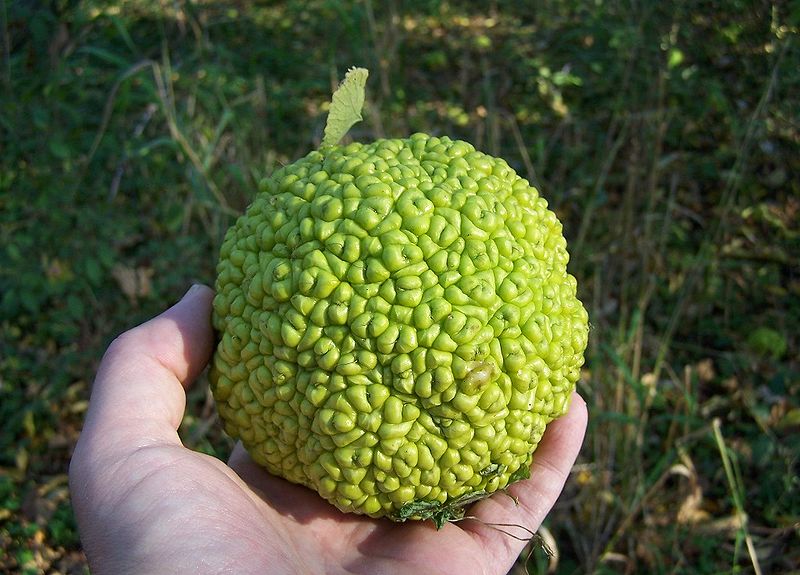
Being native to North America, Osage Orange was brought over to Hungary and Romania, being used to make traditional bows in modern times.
An interesting historical fact about the Osage Orange is that early American settlers referred to it as the “hedge apple tree”. This name came about because, after intense pruning, the tree would sprout many adventitious shoots that spring up near the base of the tree. These shoots interweave into a thick lattice that can be used as a type of primitive fencing. Indeed it was used as such by early farmers to keep livestock out of vegetable crops. This was a very common form of hedging until the invention of barb-wire in 1874.
The first French explorers and settlers in the southern United States referred to the wood as bois d’arc (or “bow-wood”). The French observed the natives using the wood to construct their bows.
Many of the traditional bows made by Flagella Dei and featured in the shop are made from Osage Orange.
Osage Orange English Longbow – Click Image for Link
Viking Bow – Osage Orange – Click Image for Link
Ash (Fraxinus)
A deciduous tree with over 50 species within the genus. Being widespread over Europe, Asia, and North America, ash is an abundant wood. As a dense hardwood with elastic properties, ash serves the bowyer well as bow wood.
The wooden staves are commonly made into self bows as well as being made into the handles and rigid siyahs or the ends of many modern Asiatic recurve bows.

Elm
An ancient tree, bows made of Elm (genus Ulmus) go back thousands of years. The Holmegaard bows discovered and preserved in Denmark date from 15,000 to 5,000 before the present are made of elm. Most ancient bows are made from Elm. In medieval times, Elm would also have been used to construct longbows if Yew was unavailable.
Being widespread throughout the Northern Hemisphere, you can find Elm in many places.
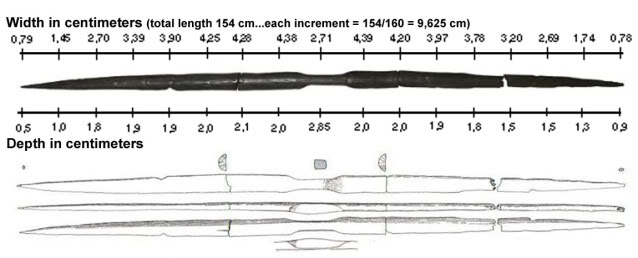
Bamboo
While technically bamboo is not a tree but rather a grass, its use in bow construction has been widespread for millennia. The cores of several Asiatic recurves are made of bamboo. The traditional Korean bow (gakung) features a core of bamboo. Traditional Chinese bows were known to be constructed out of mulberry or bamboo for their cores.
The Japanese yumi is of a seasoned and dried bamboo construction.

The Best Wood for Longbows
As previously discussed, Yew is the traditional choice for longbow wood. Other hardwoods are also desirable such as Elm, Hickory, Osage Orange, and others.
The Best Wood for Composite Bows
From the historical record, some of the following bow woods were known to have been used:
- bamboo
- maple
- mulberry
- ash
